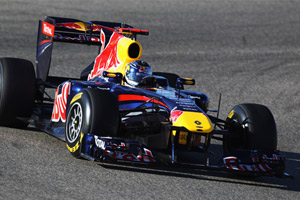Temperatures first and vibrations second are your worst enemies in anything electric electronic.
The Marelli statement is 120°C working temperature for all components.-But every increment of lower temp will DRASTICALLY improve reliability.
As the system is switched on and off it seems fairly logic that not ambient but temperature rise when using the unit is a problem-hinting at cooling of some cpomponents is marginal.So it looks like a fail safe kicking in ,or better a sensor readout is advising to shut down the system.
so we can clearly analyse from our cosy couch that RedBulls system is marginal on in use temperature .
BUT it does not slow down the car dramatically as well.At least the system is under control enough to prevent dnfs so far in the race.
sure we cannot suggest an improvement as we lack al the detail of information.But obviously the team is not in a position to erase the root cause...simply because there are no better parts available commercially.
Usually design weaknesses lead to implementation of expensive special stuff (coatings ,exotic materials)but what to do when your environment is simply too hot for your component to be able to work ? you can only add cooling performance -adding weight and drag costing outright speed .So Neweay is reluctant to swap aero performance for KERS performance with the risk of a kers failure and still have sacrificed the aeroadvantage (or part of it).I´d call this risk management.
with reference to the picture :
what do you think is it??? the Controller? The MGU? there is not many things that come in boxes and we have not even seen the part on the other side ...The car is not complete so we don´t know how it looks raceready.And we don´t even know if the pic was taken from a unit operative...as we have learned that more than once they have opted not to have it ..but of course they need to run the ballast exactly there...
not very technical but:
http://www.f1sa.com/index.php?option=co ... Itemid=157
and from Scarbs blog the picture of the KCU under the rhs radiator:

looking at the evidence it seems fairly straightforward that Battery temps are the main concern here the KCU seems to be installed in a very conventional position nothing hot nearby so the 120 limit is really the waste heat of the unit itself which is restricting ...for the batterry which is in my view even more vulnerable the temperature situation (ambient) is more severe. hinting at the problem area.


